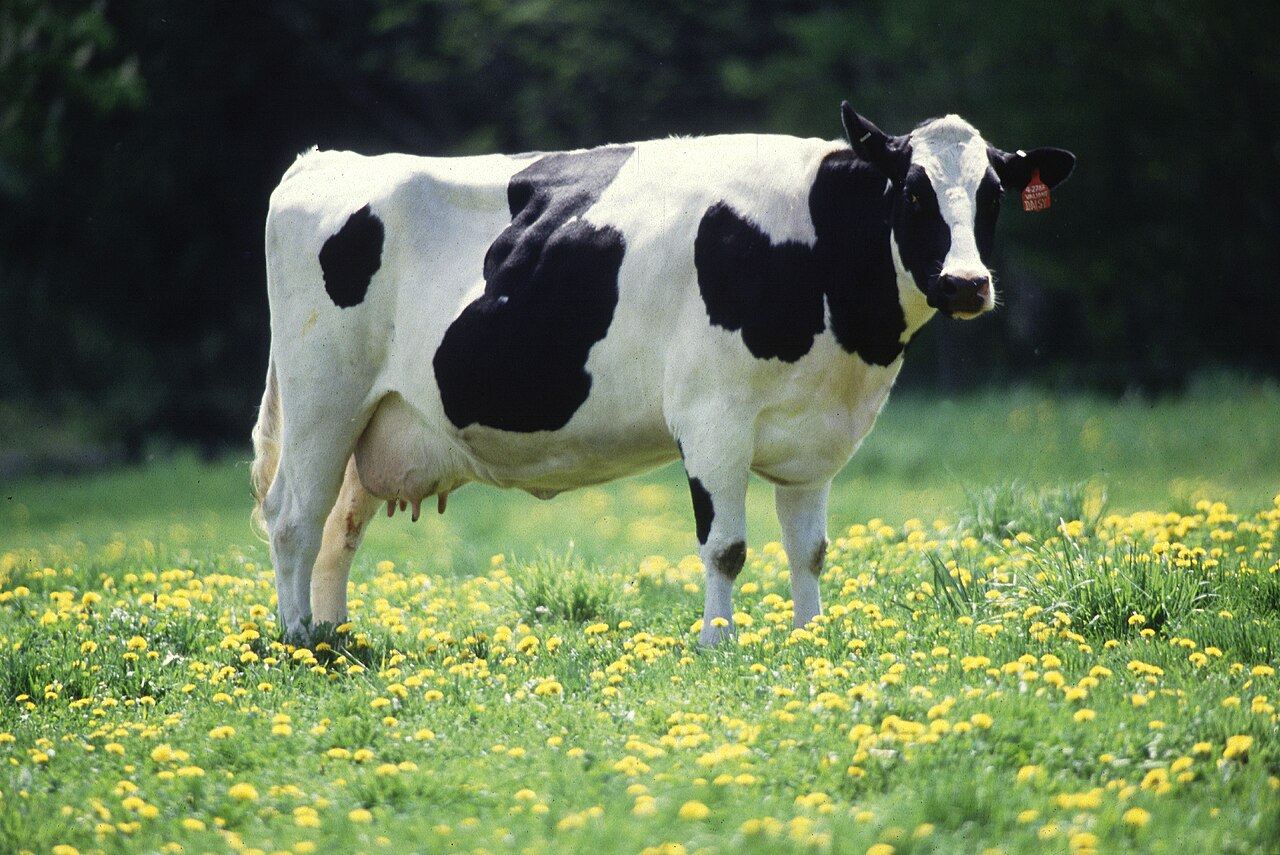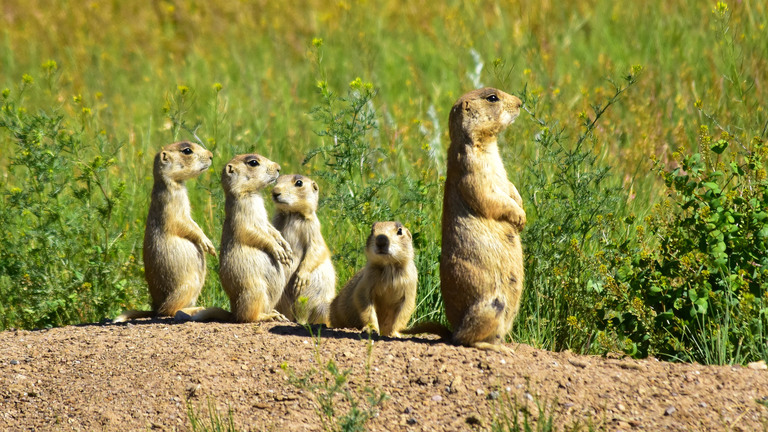
Overall, it was…
A quick, enjoyable read that taught me something new. It’s not my favorite book on the subject (that would be An Immense World by Ed Yong), but it’s written in a refreshingly direct style.
Here were my highlights.
Senses and perception

Animals seem to perceive stark contrasts between light and dark as differences in depth. This may be linked to their limited color vision. Grandin cites the case of a man who lost his color vision due to brain damage; afterward, he began seeing light contrasts as depth differences—even though he’d had no issues with depth perception before.
This phenomenon helps explain why cattle guards work: a pit is dug across the road and covered with metal bars so that cars can pass, but cattle are too frightened to cross. Interestingly, even a painted version with no pit at all can be an effective deterrent.
Another insight is that animals tend to use an additive system, rather than an averaging one, to identify objects. This means that a single change in sound, appearance, or smell can be enough to make a familiar person or object seem entirely unfamiliar and therefore threatening. It’s part of why dogs often react badly to Halloween costumes: someone they know might look, smell, or sound just different enough to be perceived as a stranger.
Grandin also emphasizes that animal perception is highly detailed and lacking in inattentional blindness. But this detailed attention is correlated with hyper-specificity and a reduced ability to generalize or form broader categories about how things should behave.
Mental health and behavior

Animals with albino characteristics—such as blue eyes, a pink nose, and white fur or skin—are more prone to neurological and behavioral problems than their darker-skinned or dark-furred counterparts. This vulnerability isn’t limited to full albinism; even partial traits seem to carry risks. One reason may be that melanin plays a protective role in the brain, and its absence affects development. It also matters medically: melanin binds to certain chemicals used in medications, so albino animals can respond differently to drug treatments.
This pattern shows up across species. White chickens, for instance, tend to be more frantic than brown ones. Paint horses, particularly those with blue eyes, are more likely to be “plain crazy”, in Grandin’s words.
Fear and pain are another area where animal responses diverge from ours. Grandin suggests that animals may not feel pain as intensely as humans do, but they experience fear more acutely—a claim she admits is speculative. What’s more certain is that animals, especially prey animals, are highly motivated to hide pain, because displaying weakness in the wild is a good way to get eaten. To observe whether a pet animal is in pain, for example, Grandin suggests leaving the animal alone with a video camera.
A series of clever experiments illustrate how fear responses can be both biologically primed and socially learned. Wild monkeys are always afraid of snakes, but lab-raised monkeys often aren’t—until they see a wild monkey reacting in fear. Once they do, they acquire that fear permanently. But when shown an edited video of monkeys reacting fearfully to a flower, they don’t acquire fear of the flower. This suggests monkeys are biologically predisposed to fear snakes, but that the fear itself must be learned. Timing matters too: if a lab monkey first sees a snake in the company of an unafraid monkey, it won’t develop fear of snakes, even if other monkeys panic later.
Another researcher discovered that a single cat hair in the lab was enough to terrify a rat that had never encountered a cat. He speculated that cues like researchers carrying the scent of their pet cats could be skewing the results of behavioral studies, since terrified animals don’t make great test subjects.
Even behaviors that seem straightforward, like canine aggression, turn out to be surprisingly context-dependent. Neutering a male dog, for example, does reduce aggression, but not because it changes the dog directly. Instead, other male dogs respond more kindly to the neutered dog, since he no longer smells like a sexual rival. It’s not his behavior that shifts first—it’s theirs.
Selective breeding

Grandin shares a number of cautionary tales about what can go wrong when animals are bred too aggressively for a single trait. One particularly memorable story involves roosters on a commercial chicken farm. Over time, the farm ran three consecutive breeding programs: first to make chickens grow faster, then to increase breast size, and finally to improve health after the first two led to birds in chronic pain. But the unintended side effects were severe. The roosters lost the instinct to perform their courtship dance—a key behavior, since hens rely on that dance to know when mating is about to happen. Without it, the hens were caught off guard and resisted, leading to violent behavior from the roosters. Some roosters began raping and then killing the hens, and eventually, half the males on the farm were affected.
Not all examples are quite so grim, but they still highlight unexpected consequences. Holstein cows, for instance, have been bred to consume enormous amounts of feed in order to produce more milk. As a result, they often develop oral fixations. Unlike beef cattle, which might just sniff or nudge objects, Holsteins left unsupervised will lick the paint off tractors and chew through hydraulic hoses.
Selective breeding also affects social and sexual behavior. American pigs, bred to be leaner in line with consumer preferences, have become more anxious and less attractive to other pigs than their fatter, calmer Chinese counterparts. When a Chinese boar was brought to the U.S., he managed to repeatedly escape his pen and breed with sows whenever he was left unsupervised—something a typical American pig would never even attempt.
Grandin also delves into the realities of how breeders collect semen and manage animal reproduction. In some species, it’s straightforward: for example, applying pressure to the females’s back can reliably trigger mating behavior in some species. But pigs present unique challenges. Boars often have very specific preferences, and breeders have to experiment to figure out what works. This might involve something as innocuous as scratching dandruff off a boar’s back—or, more intimately, masturbating the animal in a highly specific way, including (in one example Grandin gives) playing with the boar’s butthole.
Language

Grandin highlights several striking examples of complex animal communication which have led researchers to question the common wisdom that animals don’t have language.
Prairie dogs, for instance, have an astonishingly rich vocal system that includes nouns, verbs, and adjectives. They use distinct calls not just for different species of predator, but for specific individuals—such as particular coyotes—and can signal how fast a threat is moving. They’re even able to communicate whether a human is carrying a gun. Researchers focused on prairie dogs in part because they sit at the bottom of the food chain, living under constant threat. They speculate that the pressure has driven the development of an especially nuanced communication system, likely crucial to their survival.
Humpback whales offer a very different kind of linguistic intrigue. Their elaborate songs often feature refrains and rhyming patterns, and these elements become more common as the songs grow longer and more complex. Some researchers speculate that the structure—like rhyming in human speech—might serve a mnemonic function, helping the whales remember the sequence.
And as an aside about humans, which in the book is in a longer passage about music, apparently all cultures have lullabies.
YIMBY
I’m generally sympathetic to the YIMBY movement. But sometimes its proponents seem more committed to the ideology than to understanding the specifics of the systems they want to reform. Since I usually don’t have domain-specific knowledge either, I’m often unable to evaluate their claims. So when someone does weigh in with deep expertise, I tend to give their views more weight.
Temple Grandin is one of those people. While Animals in Translation isn’t about housing or land use, a couple of points she makes struck me as relevant to YIMBY concerns—particularly when it comes to the unintended consequences of well-meaning activism and the limitations of bureaucratic systems.
The first example involves screwworm infestations in horses. This used to be a widespread problem in the U.S. until the USDA launched a program to breed screwworms and irradiate the males at the pupa stage, rendering them sterile. These sterile males were then released into the wild. The program began in 1958, and by 1982 screwworm infestation in the U.S. had been eradicated. It was a major success that saved thousands of animals from suffering.
But Grandin argues that such a program would be nearly impossible today. She suggests that environmental activists—often well-intentioned but unfamiliar with on-the-ground realities—would likely protest to protect the flies. At the same time, a web of court procedures and risk-averse institutions would slow or derail the effort entirely. The project also required competent field staff with authority to act, whereas today, decision-making is often confined to office-based bureaucrats.
The second example comes from her work on meatpacking plant audits. Grandin criticizes long, detailed audit checklists. She argues that these are not only impossible to remember, but often full of vague language (like “no more use of force than strictly necessary”) and focused on measuring inputs—such as plant layout—instead of outcomes, like how the animals are actually faring.
She developed a much simpler five-point checklist focused on observable animal welfare outcomes. Her system doesn’t require perfection because demanding a zero-mistake standard often causes standards to erode over time, as rule-breakers find workarounds and honest operators give up. She also notes that the more vague, complicated audit checklists are usually made by verbal thinkers with little hands-on experience in the environments they’re regulating (i.e. wordcels).
(As a side note: in the U.S., these audits are typically conducted not by regulators, but by major restaurant chains like McDonald’s and Burger King.)
